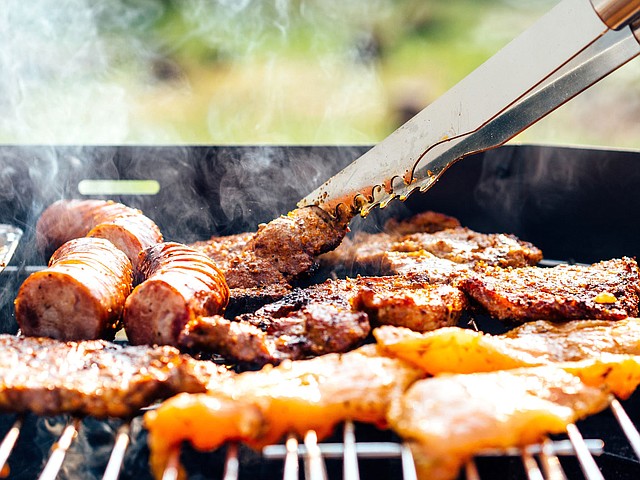While celebrating at spring gatherings, avoid foodborne illness
Courtesy Photo Spring is here, and warmer temperatures bring events like weddings, graduations and holiday celebrations. These events bring together groups of people to enjoy considerable amounts of delicious and often traditional foods. But if proper food safety steps aren't taken, your celebration could turn into a disaster.
Wednesday, May 9, 2018
Spring is here, and warmer temperatures bring events like weddings, graduations and holiday celebrations, says Easter H. Tucker, interim family and consumer sciences program leader for the University of Arkansas at Pine Bluff. These events bring together groups of people to enjoy considerable amounts of delicious and often traditional foods. But if proper food safety steps aren't taken, your celebration could turn into a disaster.
The Centers for Disease Control and Prevention estimates that in the U.S., food-borne illness causes 128,000 hospitalizations and 3,000 deaths each year, Tucker said. This spring, the U.S. Department of Agriculture (USDA) is offering tips on how to properly handle, cook and store food when serving large groups of people. These tips will keep you and your guests safe from food-borne illness.
The Four Basic Steps to Food Safety
Having the right kitchen equipment will make your life easier when practicing four food safety steps: clean, separate, cook and chill.
• Clean hands frequently with warm soapy water, especially before and after handling raw food; thoroughly wash cutting boards, counter-tops and utensils with hot soapy water.
• Use separate cutting boards for raw and ready-to-eat foods. For example, use one cutting board for produce and a different one for raw meat and poultry. That way, you are preventing cross contamination between raw and ready-to-eat-food.
• Always use a food thermometer when cooking. Measure the internal temperature of meats, poultry, and seafood and egg products before serving to make sure they are ready to eat. The USDA Safe Minimum Internal Temperatures chart will help you determine if your food is safe to eat:
- Beef, pork, veal and lamb - steaks, chops or roasts: 145°F and allow to rest for at least three minutes (including fresh or smoked ham)
- Ground meats: 160°
- Fully cooked ham (to reheat): Reheat cooked hams packaged in USDA-inspected plants to 140°F and all others to 165°F
- All poultry (breasts, whole birds and stuffing, legs, thighs, wings and ground poultry): 165°F
- Egg dishes: 160°F
- Fish: 145°F
- Leftovers and casseroles: 165°F
Perishable food should not be left out at room temperature for more than two hours. At celebration gatherings, make sure your cold food is kept cold (40°F or below) by serving it in smaller portions and refilling, or by putting the food containers over ice. Hot food should be kept hot (140°F or above); you can keep the food warm by serving in warming trays or using a slow cooker.
Grocery Shopping Plan
When shopping for groceries:
Pick up cold items last and bring them home immediately so they are refrigerated or frozen within two hours.
Place raw meat and poultry in plastic bags to prevent raw juices (which may contain harmful bacteria) from dripping onto other foods in your shopping cart.
Spring Kitchen Basics
- Make sure your refrigerator temperature is set to 40°F or below and your freezer at 0°F or below. An appliance thermometer can come in handy to check those temperatures.
- Spring clean' your fridge for a fresh, healthy start this time of the year.
- Do not wash meat and poultry. Doing so increases the risk of cross-contamination in your kitchen. Cooking meat and poultry to the correct internal temperature will kill any bacteria.
- Do not thaw foods at room temperature. Safe thawing can only be done in the refrigerator, in the microwave or by using the cold-water method. If you thaw using the microwave or the cold-water method, be sure to cook the food immediately after it has thawed.
- Perishable food should not be left at room temperature for more than two hours (one hour when temperature is above 90°F).
- When storing leftovers like large pots of soup or stew, divide them into shallow containers. Slice large portions of cooked meat or poultry into smaller portions and store in containers. Cover and refrigerate.
Consumers with questions about food safety can call the USDA Meat and Poultry Hotline at 1-888-MPHotline (1-888-674-6854) or chat live with a food safety specialist in English or Spanish at AskKaren.gov, available from 10 a.m. to 6 p.m. ET, Monday through Friday.
Community on 05/09/2018